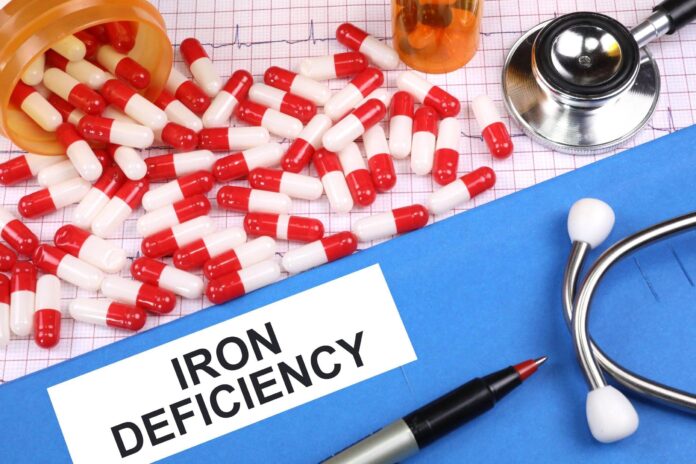
Iron deficiency anemia is a common type of anemia that occurs when the body does not have enough iron to produce hemoglobin. Hemoglobin is a protein in red blood cells that helps carry oxygen from the lungs to the rest of the body. When there is a lack of iron, the body cannot make enough red blood cells, which can lead to symptoms such as fatigue, weakness, and shortness of breath. Understanding the causes, symptoms, and treatment of iron deficiency anemia is important for managing this condition and maintaining overall health.
Causes of Iron Deficiency Anemia
There are several possible causes of iron deficiency anemia. The most common cause is not getting enough iron in the diet. Iron is found in a variety of foods, including red meat, poultry, fish, and beans. Some people may not have enough iron in their diets due to poor eating habits, restrictive diets, or digestive issues that affect iron absorption. Women who have heavy menstrual periods may also be at risk for iron deficiency anemia due to the loss of blood and iron each month.
Other causes of iron deficiency anemia include chronic bleeding in the gastrointestinal tract, such as from ulcers, hemorrhoids, or colon cancer. Some individuals may have trouble absorbing iron from food due to conditions like celiac disease or inflammatory bowel disease. Additionally, certain medical conditions, such as kidney disease or heart failure, can lead to iron deficiency anemia as the body may not be able to efficiently use the iron it has.
Symptoms of Iron Deficiency Anemia
The symptoms of iron deficiency anemia can vary depending on the severity of the condition. Common symptoms include fatigue, weakness, and pale skin. Other signs and symptoms may include:
– Shortness of breath
– Dizziness or lightheadedness
– Headaches
– Cold hands and feet
– Brittle nails
– Rapid heartbeat
– Unusual cravings for non-nutritive substances such as ice or dirt
– Restless legs syndrome
– Difficulty concentrating
– Poor appetite
If left untreated, iron deficiency anemia can lead to more serious complications, such as heart problems, impaired immune function, and developmental delays in children.
Treatment of Iron Deficiency Anemia
The treatment of iron deficiency anemia aims to increase the body’s iron levels and address the underlying cause of the condition. The first step in treating iron deficiency anemia is to identify and address the cause of the iron deficiency. This may involve making changes to the diet, addressing any gastrointestinal bleeding, or managing an underlying medical condition that is affecting iron absorption.
In addition to addressing the underlying cause, iron deficiency anemia is typically treated with iron supplementation. Iron supplements may be recommended in the form of ferrous sulfate, ferrous gluconate, or other iron preparations. It is important to follow your healthcare provider’s recommendations for iron supplementation, as taking too much iron can lead to toxicity and cause serious health problems.
In some cases, iron supplementation alone may not be enough to correct iron deficiency anemia. If a person has trouble tolerating oral iron supplements or has a condition that affects their ability to absorb iron from the gastrointestinal tract, they may need to receive iron through intravenous (IV) infusion. IV iron therapy can provide a more rapid and efficient correction of iron levels, especially in cases of severe iron deficiency anemia.
Preventing Iron Deficiency Anemia
Preventing iron deficiency anemia starts with consuming a balanced diet that includes iron-rich foods. Red meat, poultry, fish, and beans are all good sources of iron, and consuming foods high in vitamin C can help enhance iron absorption. It is also important to avoid consuming substances that can impair iron absorption, such as excessive amounts of caffeine, calcium, or tannins found in tea.
For individuals who have trouble getting enough iron from their diet, or for those who have increased iron needs due to pregnancy or other factors, iron supplements may be recommended. However, it is important to take iron supplements as directed by a healthcare provider, as excessive iron intake can be harmful.
Regular visits to a healthcare provider for routine checkups and blood tests can help identify iron deficiency anemia early and enable prompt treatment. Women with heavy menstrual periods or individuals with chronic health conditions should be particularly vigilant in monitoring their iron levels and discussing any concerns with their healthcare provider.
In summary, iron deficiency anemia is a condition that occurs when the body does not have enough iron to produce hemoglobin. The causes of iron deficiency anemia can range from poor diet to medical conditions that affect iron absorption. Understanding the symptoms of iron deficiency anemia, such as fatigue, weakness, and pale skin, is important for prompt diagnosis and treatment. Treatment of iron deficiency anemia typically involves addressing the underlying cause and supplementing with iron orally or through IV therapy as needed. Preventing iron deficiency anemia involves consuming a balanced diet, monitoring iron levels, and taking iron supplements if recommended by a healthcare provider. By understanding the causes, symptoms, and treatment options for iron deficiency anemia, individuals can take steps to manage this condition and maintain their overall health.












